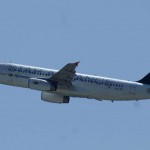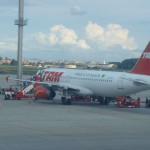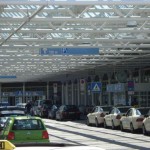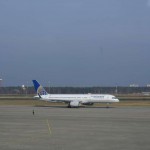Continental Airlines today reported a January consolidated (mainline plus regional) load factor of 73.2 percent, 3.6 points below the January 2008 consolidated load factor, and a mainline load factor of 74.0 percent, 3.4 points below the January 2008 mainline load factor.
Houston – In addition, the carrier reported a domestic mainline January load factor of 76.6 percent, 3.0 points below the January 2008 domestic mainline load factor, and an international mainline load factor of 71.7 percent, 3.4 points below January 2008.
During the month, Continental recorded a U.S. Department of Transportation (DOT) on-time arrival rate of 77.4 percent and a mainline segment completion factor of 99.3 percent.
In January 2009, Continental flew 6.4 billion consolidated revenue passenger miles (RPMs) and 8.8 billion consolidated available seat miles (ASMs), resulting in a consolidated traffic decrease of 11.0 percent and a capacity decrease of 6.5 percent as compared to January 2008. In January 2009, Continental flew 5.8 billion mainline RPMs and 7.8 billion mainline ASMs, resulting in a mainline traffic decrease of 10.8 percent and a mainline capacity decrease of 6.7 percent as compared to January 2008. Domestic mainline traffic was 2.8 billion RPMs in January 2009, down 14.6 percent from January 2008, and domestic mainline capacity was 3.7 billion ASMs, down 11.2 percent from January 2008.
For January 2009, consolidated passenger revenue per available seat mile (RASM) is estimated to have decreased between 5.0 and 6.0 percent compared to January 2008, while mainline passenger RASM is estimated to have decreased between 3.5 and 4.5 percent compared to January 2008.
For December 2008, consolidated passenger RASM increased 4.0 percent compared to December 2007, while mainline passenger RASM increased 4.9 percent compared to December 2007.
Continental’s regional operations had a January load factor of 66.5 percent, 6.0 points below the January 2008 regional load factor. Regional RPMs were 648.5 million and regional ASMs were 976.0 million in January 2009, resulting in a traffic decrease of 12.8 percent and a capacity decrease of 4.9 percent versus January 2008.





